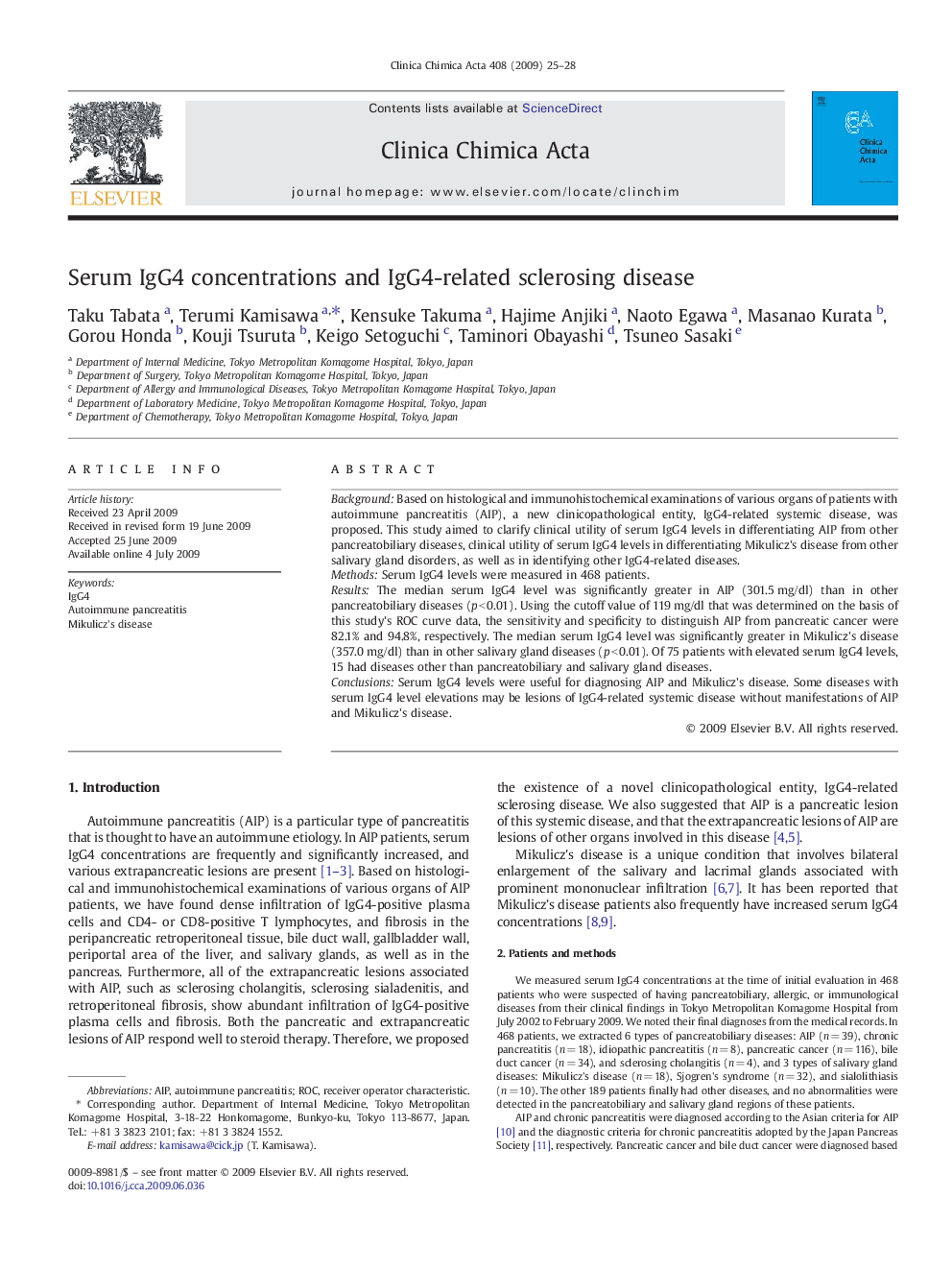| Article ID | Journal | Published Year | Pages | File Type |
|---|---|---|---|---|
| 1966487 | Clinica Chimica Acta | 2009 | 4 Pages |
BackgroundBased on histological and immunohistochemical examinations of various organs of patients with autoimmune pancreatitis (AIP), a new clinicopathological entity, IgG4-related systemic disease, was proposed. This study aimed to clarify clinical utility of serum IgG4 levels in differentiating AIP from other pancreatobiliary diseases, clinical utility of serum IgG4 levels in differentiating Mikulicz's disease from other salivary gland disorders, as well as in identifying other IgG4-related diseases.MethodsSerum IgG4 levels were measured in 468 patients.ResultsThe median serum IgG4 level was significantly greater in AIP (301.5 mg/dl) than in other pancreatobiliary diseases (p < 0.01). Using the cutoff value of 119 mg/dl that was determined on the basis of this study's ROC curve data, the sensitivity and specificity to distinguish AIP from pancreatic cancer were 82.1% and 94.8%, respectively. The median serum IgG4 level was significantly greater in Mikulicz's disease (357.0 mg/dl) than in other salivary gland diseases (p < 0.01). Of 75 patients with elevated serum IgG4 levels, 15 had diseases other than pancreatobiliary and salivary gland diseases.ConclusionsSerum IgG4 levels were useful for diagnosing AIP and Mikulicz's disease. Some diseases with serum IgG4 level elevations may be lesions of IgG4-related systemic disease without manifestations of AIP and Mikulicz's disease.
